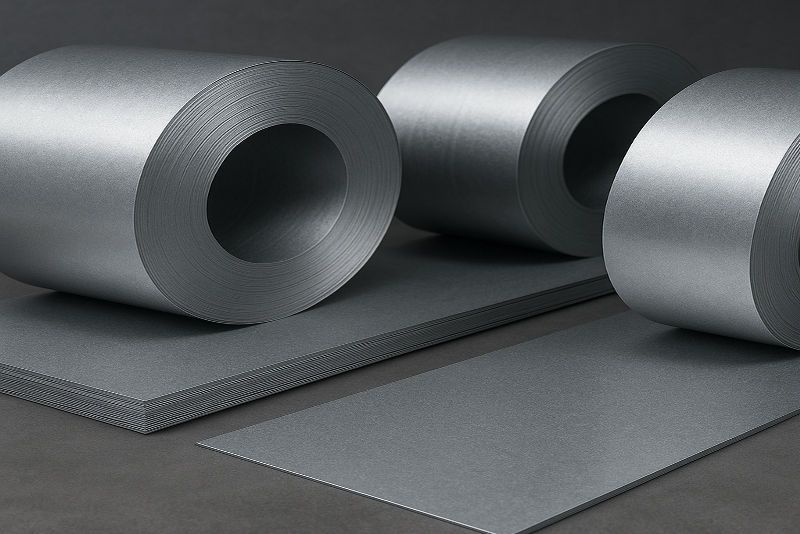The automotive industry depends on materials that balance strength, durability, and corrosion resistance while being cost-efficient. Two of the most widely used coated steel products are Galvalume steel and Galvanized steel. Both have unique properties, and choosing the right one can directly impact vehicle performance, lifespan, and manufacturing costs.
Let’s explore the differences, applications, and why MSMEs in the automotive supply chain should carefully evaluate both options.
Which is better for automotive applications: Galvalume or Galvanized steel?

What is Galvanized Steel?
Galvanized steel is produced by coating regular steel with a layer of zinc. This provides excellent corrosion protection and makes it suitable for:
• Automotive body panels.
• Structural parts requiring rust protection.
• Outdoor and exposed components.
The zinc coating acts as a barrier against environmental exposure, making Galvanized Steel Sheets and Galvanized Coils a popular choice in automobile manufacturing.
What is Galvalume Steel?
Galvalume steel is coated with an alloy of zinc and aluminum, combining the strength of zinc with the added corrosion resistance of aluminum. Its applications include:
• Car roofs and panels exposed to weather.
• Components in high-humidity regions.
• Automotive parts that require longer life with reduced maintenance.
Galvalume offers better heat reflectivity and corrosion protection compared to galvanized steel, making Galvalume Coils an excellent option for modern automotive designs.
While both materials are designed to protect against corrosion, they differ in important ways:
• Coating: Galvanized steel uses a 100% zinc coating, while Galvalume combines zinc with aluminum for added protection.
• Corrosion Resistance: Galvanized steel performs well, but Galvalume offers superior protection and a longer lifespan, especially in harsh or coastal environments.
• Heat Reflectivity: Galvalume reflects heat more effectively, making it a better choice in hot climates.
• Cost: Galvanized steel is more affordable upfront, while Galvalume is slightly costlier but delivers long-term savings by reducing replacement and maintenance.
• Best Use Cases: Galvanized steel works best for general automotive components and exposed structures, while Galvalume excels in roofs, panels, and high-moisture applications.
Why This Choice Matters for MSMEs in Automotive
For MSMEs supplying automotive parts, choosing the right coated steel impacts:
• Product quality – Better resistance ensures fewer defects.
• Customer trust – Vehicles built with durable components enhance reputation.
• Cost efficiency – While Galvalume may be slightly more expensive, it reduces long-term replacement and maintenance costs.
MSMEs engaged in sheet metal fabrication can explore Coated Steel options to meet diverse automotive requirements.
Final Takeaway
Both Galvalume and Galvanized steel have a role in the automotive sector. The decision depends on the specific application, budget, and performance requirements.
• Choose Galvanized Steel for cost-efficient, general-purpose automotive components.
• Opt for Galvalume Steel for parts that demand superior corrosion resistance and long-term durability.
Explore coated steel options at JSW One MSME and choose the right material for your automotive projects.
Register Today for Exclusive Benefits
Get access to bulk pricing, expert support, and reliable supply for your automotive manufacturing needs.
Register now on JSW One MSME and streamline your procurement journey.
Buy online
Mild SteelStainless SteelStructural SteelTMTCementJSW One MSME
About usBlogsSitemapJSW One TMTPolicy
Terms & conditionsPrivacy policyReturn policyBanking partner


 +91 7208055523
+91 7208055523
 Help & support
Help & support
